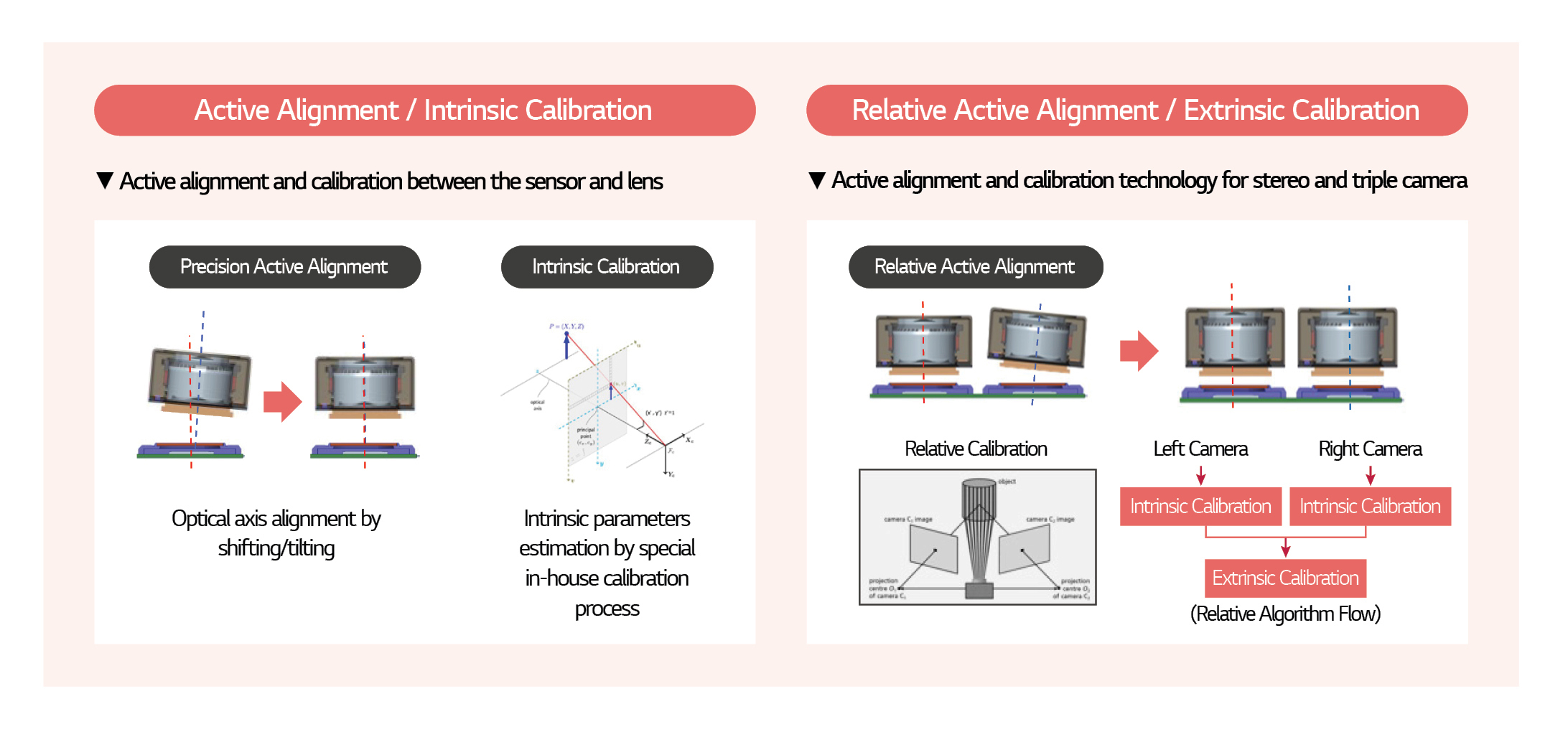View entire menu
전체메뉴
회사정보
회사소개
- 회사개요
- CEO인사말
- 연혁/수상
- 비전/조직문화
- 사업장
- CI
IR
- 경영정보
- 재무정보
- 주식정보
- IR자료실
- 공시
디지털 역사관
뉴스룸
- 보도자료
- 소셜미디어
- 홍보자료
LG Innotek Insights
제품정보
사업부개요
광학솔루션
- Camera Module
- 3D Sensing Module
- Optical Module
- Actuator
기판소재
- Package Substrate
- FC-BGA
- Display Solution
전장부품
- Connectivity Solution
- Autonomous Driving Solution
- Electrification Solution
- Lighting Solution
전자부품
- Power Solution
- Smart Home
ESG
ESG 경영
- CEO 메시지
- 비전/추진체계
- ESG 경영방침
Environment
- 탄소중립
- 자원순환
- 친환경 기술/제품
Social
- 구성원 자부심
- 안전/보건
- 공급망 ESG
- 사회공헌
- 사이버 신문고
Governance
- 경영투명성
- 주주 친화
- Risk Management
ESG Fact Book
- 지속가능성보고서
- 평가/인증
ESG활동
- 친환경 경영
- 사회책임 경영
- 신뢰받는 지배구조
- 외부수상
고객지원
FAQ
고객문의
소프트웨어라이브러리
Newsletter Subscription Request
Fill out the following information and subscribe to LG Innotek Insights newsletters to stay up to date with the latest LG Innotek news.
Newsletter Subscription Request
Newsletter Subscription Request
LG Innotek Insights

Intro: Autonomous Driving Market Outlook
and Sensing Solution Changes
The generational transition of autonomous driving vehicles is happening rapidly. Level 2/2+ autonomy is expected to remain mainstream through 2035, after which the market will see the ascendance of level 3 and higher technology. However, we are already seeing the introduction of level 3 technology in 2023, and anticipate an early level 4/5 market opening in 2025.
Technological innovation in this space is driven by advances in sensing solutions. Autonomous driving sensing solutions typically use an optimal combination of sensors such as LiDAR(Light Detection And Ranging), RADAR(Radio Detection And Ranging) and Cameras to help autonomous vehicles fully perceive and develop a sophisticated understanding of their surroundings. Accurate and reliable recognition is essential for safe driving, emergency response, and decision-making while driving.
After achieving level 3 autonomy, the demand for ultra-precision sensors will continue to grow as the industry moves toward higher levels of autonomy, such as levels 4 and 5. As autonomous driving systems evolve further, the demand for higher resolution, longer range, and more accurate autonomous driving sensing solutions such as LiDAR, RADAR, Camera, and ultrasonic sensors will increase. In addition, technological innovation is required to ensure consistent performance even in challenging conditions such as rain, snow, fog, and extreme temperatures. Moreover, the increasing importance of Sensor Fusion technology, which can efficiently process and integrate data from various sensors to comprehensively understand and analyze the surrounding environment by relying on the collected data, is driving significant growth in demand for sensors based on this innovative technology.

Sensing Solutions by Level of
Autonomous Driving
Level 3 and Beyond: New Criteria for Automotive
Component Suppliers
As the level of autonomous driving increases, more numerous –
and more accurate – sensors are required. As advanced level 3+ autonomous
driving sensors emerge as essential core elements of the automotive components,
automotive component suppliers’ high-performance sensor mass production
systems, design technology, and understanding of vehicle software and systems
are emerging as the most important core competencies.
There are five major evaluation criteria for automotive
component suppliers. The first is the differentiation of ultra-precision sensor
production and design technology that can stably support OEMs’ autonomous
driving roadmap and experience in developing various types of vehicle sensors.
The second is proven autonomous driving sensing solution technology rooted in
the optical and substrate sectors. The third is to secure Sensor Fusion
technology that can realize safer autonomous driving with fewer sensors while
exceeding the limits of individual sensors through Sensor Fusion. The fourth is
to have an integrated platform based on hardware and software integration
know-how and understanding of SDV (Software Defined Vehicle) that can realize
the SDV value that OEMs seek. The fifth is price optimization capabilities
along with stable supply of components through proven high-performance sensor
manufacturing and mass production base.
LG Innotek Sensing Solutions: Key
Differentiators
LG Innotek provides a portfolio of various sensors, from individual sensor modules that can support evolution beyond the current mainstream level 2/2+ to levels 3, 4, and 5, to Sensor Pod. LG Innotek has core competencies related to customer-specific design and manufacturing that can flexibly accommodate the autonomous driving requirements of various global OEMs based on its deep understanding of various automotive sensors and years of mass production experience. In addition, through collaborative research with major global sensor manufacturers, LG Innotek has experience in joint development and delivery of next-generation autonomous driving image sensors, and has the capacity to mass-produce high-performance, ultra-precision vehicle sensors with consistent quality based on our leadership position in the global camera market in the mobile sector. LG Innotek has developed optimal design and production systems through its deep institutional knowledge and technological prowess.

LG Innotek Sensing Solution
Differentiation Point
Manufacturing of Ultra-precision Sensors
LG Innotek’s ultra-precision sensor production capability has already been proven in the mobile market, as the company has a track record of successful design and mass-production of ultra-precision optical cameras. As the level of autonomous driving increases, human intervention is reduced, and sensors must inevitably become more complex and sophisticated to ensure ever-higher accuracy. For this reason, OEMs place great importance on sensor suppliers’ ultra-precision optical alignment (Active Alignment) technology and sensor calibration process (Calibration) capabilities – competencies that are essential for long-term reliability and safety of autonomous vehicles. Ultra-precise optical alignment enables precise positioning and orientation of optical and electronic components within the sensor. Next, a calibration process must be supported to fine-tune sensor performance and ensure that each sensor’s output is accurate and reliable. Maintaining a consistent level of quality across the entire production batch minimizes the risk of sensor failure or degradation over time.

Precise Manufacturing Solution:
Active Alignment Process Technology
LG Innotek guarantees the quality, reliability and
performance of sensors used in autonomous vehicles based on ultra-precision
optical alignment and sensor calibration processes. For example, LG Innotek’s
core competency is the advancement and refinement of LiDAR ultra-precision
optical alignment, which operates with a combination of Tx/Rx. This represents
a key example of the application of LG Innotek’s accumulated mobile-related
design and production capabilities and optical camera technological expertise
to the automotive component business: finding the optimal positions of the Tx/Rx
optical systems, precisely adjusting the tilt and shift to the world’s most
exacting standards, and optimizing the LiDAR production process. In the case of
cameras, deviations in performance are minimized through ultra-precise optical
alignment that accounts for vertical and horizontal rotation based on PCB or
lens. Similarly, RADAR systems have also realized zero alignment error by
incorporating laser sensors into production technology.
World-leading optical and substrate design
technology
The key differentiators of LG Innotek’s sensing solutions,
such as improved module performance, miniaturization and slimming of
components, adverse weather performance, and Sensor Fusion, come from its
world-leading optical and substrate design technology. LG Innotek provides a
wide range of products such as camera modules and sensors. Through this
diversified portfolio, it has responded to the needs of various industries and
has enhanced its optical and substrate design capabilities. In addition, LG
Innotek has improved its competency by reducing costs while ensuring quality
and reliability by better controlling the production process with a vertical
integration strategy that designs, manufactures, and assembles components in-house.
This competency extends to the design and production of
cameras and LiDAR sensing solutions. The synergistic effects of technologies
and production capabilities accumulated by LG Innotek in the mobile sector have
extended to the autonomous vehicle sector, and LG Innotek has emerged as a
world-class components company due to this point of differentiation. LG
Innotek’s experience in designing and mass-producing mobile/IoT camera, such as
ultra-wide-angle cameras, multi-cameras, and 3D sensing modules, is generating
synergy in all stages from LiDAR ultra-precision design to production and
verification. For example, LG Innotek optimizes LiDAR Tx/Rx Alignment – the
core of LiDAR design – based on its mobile business experience.
In addition, by utilizing simulation capabilities honed in
the optical and substrate sector, LG Innotek has improved module performance
through robust design that maintains high resolution even in temperature
changes, while ultrasonic welding technology contributes to miniaturization and
slimming of sensing solutions. The heating solution that overcomes various
natural phenomena such as snow and moisture also came from the know-how
accumulated through optical system design. The composite and hybrid lens
solutions for various applications demanded by OEMs also have their roots in LG
Innotek’s world-leading optical and substrate design technology. The mmWave
antenna applied to RADAR is also based on LG Innotek’s experience in designing
array and waveguide antennas.
Ultra-precision sensor fusion design
capabilities
LG Innotek has a sensing solution lineup that can accommodate
various OEMs’ sensor fusion needs. LG Innotek can provide a sensor fusion
solution that helps autonomous driving cars make timely and accurate decisions
by applying an algorithm that processes LiDAR, RADAR, and Camera data in real
time. In addition, it is possible to provide middleware and integration
platforms that can seamlessly integrate the sensor system with other components
of the vehicle, such as the central processing unit, communication system, and
vehicle control system.
Securing manufacturing capability and price competency using SDV value-based hardware and software integrated development platform JEDFe
Global OEMs cite understanding of software as a key criterion
for selecting a sensing solution partner. OEMs need a partner that can reliably
support the SDV strategy, which OEMs are deploying to pursue mobility
strategies after level 3. LG Innotek has clear differentiation in adopting the
SDV strategy. From an SDV perspective, autonomous vehicle sensing solution
providers must have comprehensive software capabilities to ensure seamless
integration and optimal performance of their sensors within the broader
autonomous driving ecosystem. Based on the JEDFe (Joined Evolving Digital Framework) developed by LG Innotek to facilitate the
design and development of electronic components such as sensors, Camera
modules, and communication devices, high-performance sensors are produced with
stable yields in a mass production process.
JEDFe is a hardware and software integrated development platform. LG Innotek uses JEDFe to achieve digital-based manufacturing innovation in all areas from product design to production. For example, LG Innotek conducts virtual design and verification in a digital twin environment at the initial stage of design. In the mass production stage, high-quality and high-performance sensing solutions are stably produced in a smart factory environment. Unlike the traditional manufacturing environment, the smart factory environment collects all data generated throughout each process, using big data-based analysis and artificial intelligence-based production to continuously enhance quality and price competency in mass production.

LG Innotek JEDFe Development
System integrated HW/SW
Accumulation of mass production experience
and testing and certification capabilities
LG Innotek possesses a wide range of testing and certification capabilities. LG Innotek holds certifications for automotive components related to autonomous driving and electric vehicles and makes components that are faithful to the needs of OEMs through a state-of-the-art test environment. For example, LG Innotek performs NIR/SWIR transmitter and receiver optical function tests when creating LiDAR solutions, and also develops and applies customized test stations for each Tx/Rx transceiver. LG Innotek’s cloud-based digital data platform connects the entire process from design to production into one system, shares key data with OEMs, and maximizes SDV-related components and software design, verification, and production efficiency. This ensures accurate and reliable data collection and processing in autonomous vehicles. Since most leading LiDAR companies are small businesses with limited production quantities, LG Innotek’s mass production capabilities provide a competitive advantage, allowing the company to meet the growing demand for LiDAR sensors in the autonomous driving vehicle market. Currently, LG Innotek has established a separate LiDAR calibration, test, and verification line optimized through mobile ToF (Time-of-Flight) design and mass production experience. By utilizing this dedicated line, LG Innotek can ensure a stable supply of high-quality LiDAR products that meet industry standards and performance requirements.
Outro: Readiness for the future era of
autonomous driving
Who will open the era of level 4 and 5 autonomous driving
first? OEMs started fierce R&D competition to preoccupy the future market.
The most important factor in implementing levels 4 and 5 is the ultra-precise
sensor. While it will remain crucial to make sensors such as LiDAR, RADAR, and
Cameras conform to level 4 and 5 requirements, Sensor Fusion technology for
more precise sensing that compensates for the shortcomings of each individual
sensor will be of the utmost importance.
Based on its expertise in camera and substrate design and large-scale mass production, LG Innotek has a competitive edge in agile development and supply of advanced sensor solutions that meet the requirements of autonomous driving systems that encompass both the present and the future. LG Innotek has created synergy with sensor technologies such as LiDAR, RADAR, and Cameras based on more than 20 years of experience in designing and mass-producing high-quality camera modules and substrates for mobile devices and IoT applications – two decades spent establishing a strong quality control process, methodology, and platform. In addition, based on its deep understanding of SDV, LG Innotek can accommodate the demand for hardware and software integration. LG Innotek’s large-scale mass production capabilities position the company ideally to meet the expanding production scale of sensor technology for the growing autonomous vehicle market.
This paper is valuable property of LG Innotek Co., Ltd. (hereinafter referred to as “LGIT”). Any information provided herein shall be protected by applicable copyright acts, rules and regulations. Any and all information provided herein may not be accurate and is, from time to time, subject to change and error. This paper is intended to provide general information on LGIT’s main products and is not an exhaustive treatment of LGIT’s main products or substitute to obtaining professional services or advice. This paper may contain information sourced from publicly available information or other third- party sources. LGIT does not independently verify any such sources and is not responsible for any loss whatsoever caused due to reliance placed on information sourced from such sources. You should seek specific advice of relevant qualified professionals before making any decision or taking any action that might affect your personal finances or business. In no event shall LGIT be responsible for any loss or damage whatsoever sustained by any person or entity by reason of use or reliance on this paper. Please see www.lginnotek.com for a more detailed description of LGIT or LGIT’s products.
ⓒ 2023 LG Innotek Corporation Limited

















